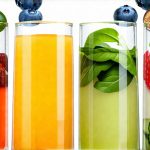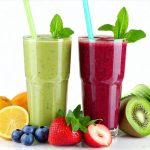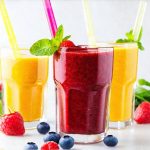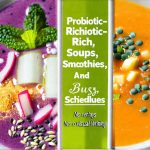Smoothies have exploded in popularity as a convenient and seemingly healthy meal replacement option. Promoted for their nutrient density and ease of preparation, they’ve become a staple for busy individuals seeking quick breakfasts, post-workout recovery drinks, or even full meal replacements. However, the very features that make smoothies attractive – their concentrated nature and often rapid consumption – can ironically contribute to digestive distress, specifically constipation, when overdone or improperly balanced. Many people don’t realize that simply packing a smoothie with “healthy” ingredients doesn’t automatically guarantee optimal digestion; in fact, it requires careful consideration of fiber types, liquid intake, and overall dietary balance to avoid unintended consequences.
The allure of the all-smoothie diet stems from its perceived health benefits and convenience. We are often told to increase fruit and vegetable consumption, and smoothies appear to deliver on this front with ease. Yet, blending fundamentally alters the structure of food. Chewing plays a vital role in digestion, initiating enzymatic breakdown and preparing food for further processing in the gut. Smoothies bypass much of this initial mechanical breakdown, placing a greater burden on the digestive system. Furthermore, while fruits and vegetables are inherently beneficial, an excessive reliance on them – particularly without adequate supporting nutrients like fats and proteins – can disrupt the delicate balance needed for regular bowel movements. This article will delve into why overdoing smoothie meals can lead to constipation, offering insights into prevention and mitigation strategies.
The Fiber Paradox in Smoothies
Smoothie recipes often boast high fiber content, which sounds ideal for digestive health. However, it’s not simply how much fiber you consume, but the type of fiber and how it’s presented that matters most. There’s a significant difference between the fiber found in whole fruits and vegetables versus blended versions. Whole foods require chewing, releasing fiber gradually into the digestive system, promoting steady peristalsis (the wave-like muscle contractions that move food through your intestines). Blending breaks down cell walls, essentially pre-digesting the fiber to some extent. This can lead to quicker transit in the upper digestive tract, but paradoxically, it doesn’t necessarily translate to more effective bulk formation or stimulation of bowel movements.
The problem is compounded by the fact that many smoothie recipes heavily feature soluble fiber from sources like bananas, berries, and applesauce. Soluble fiber absorbs water, forming a gel-like substance which can be beneficial for regulating blood sugar and cholesterol levels. However, excessive soluble fiber without sufficient insoluble fiber – found in foods like wheat bran, vegetables (especially with skins), and nuts – can actually slow down digestion and contribute to stool softness, ultimately leading to constipation. Insoluble fiber adds bulk to the stool, providing the necessary stimulation for regular bowel movements. A smoothie that’s predominantly soluble fiber is essentially missing a key component needed for proper elimination. Individuals struggling with this might also experience issues related to [poor sunlight] (https://vitagastro.com/constipation-symptoms-triggered-by-poor-sunlight/).
The rapid consumption of smoothies further exacerbates this issue. When you eat whole foods, your digestive system has more time to process and extract nutrients gradually. Swallowing a large volume of liquidized food quickly can overwhelm the digestive system, leading to incomplete processing and potential imbalances in gut motility. Essentially, it’s like trying to push too much through a narrow passage without adequate lubrication or preparation – resulting in a blockage (or constipation). Furthermore, [unscheduled cheat meals] (https://vitagastro.com/loose-bowels-triggered-by-unscheduled-cheat-meals/) can also impact digestion.
Understanding Smoothie Ingredients & Constipation Risks
Certain smoothie ingredients are more prone to contributing to constipation than others. Bananas, while nutritious, are high in soluble fiber and low in insoluble fiber. Overreliance on banana-based smoothies is a common culprit. Similarly, excessive amounts of berries, although packed with antioxidants, can have the same effect. Even seemingly harmless additions like applesauce or mangoes contribute largely to soluble fiber intake.
Protein powders, especially whey protein concentrate, can sometimes cause digestive issues for some individuals, leading to bloating and constipation. While not directly a fiber issue, they can disrupt gut bacteria balance and slow down digestion. Similarly, excessive use of nut butters without adequate water intake can create sticky stools that are difficult to pass. It is important to note that individual tolerance varies greatly; what causes constipation in one person might not affect another. If you find yourself consistently constipated, consider if [low-fiber meals] (https://vitagastro.com/constipation-caused-by-repetitive-low-fiber-meals/) are a contributing factor.
- To minimize these risks:
- Balance your smoothie ingredients with a good mix of soluble and insoluble fiber sources.
- Incorporate greens like spinach or kale (which provide some insoluble fiber).
- Add small amounts of healthy fats (avocado, flaxseeds, chia seeds) to aid in digestion.
- Limit the amount of high-soluble fiber fruits like bananas and mangoes.
- Stay adequately hydrated throughout the day. Some individuals may find that [no-carb snack replacements] (https://vitagastro.com/constipation-triggered-by-no-carb-snack-replacements/) can also play a role.
The Role of Hydration & Liquid Intake
Constipation isn’t always about a lack of fiber; often, it’s about a lack of water. Smoothies themselves are liquid, but this doesn’t necessarily equate to adequate hydration for optimal bowel function. Blended foods require more water for proper digestion than solid foods because the breakdown process is already partially completed. The body needs additional fluids to move the softened fiber through the digestive tract. If you’re replacing multiple meals with smoothies and not increasing your overall fluid intake, you’re setting yourself up for constipation.
Furthermore, some smoothie ingredients can be diuretic – meaning they promote water loss. Caffeine (if added in the form of coffee or green tea) is a common example. Alcohol, if used as a liquid base (though less common), also has diuretic properties. Even certain fruits and vegetables have mild diuretic effects. This means that while you’re consuming fluids, your body may be eliminating them more quickly than it’s absorbing them.
- Ensure adequate hydration by:
- Drinking water throughout the day, separate from smoothie consumption.
- Monitoring your urine color – pale yellow indicates good hydration.
- Avoiding excessive diuretic beverages alongside smoothies.
- Considering electrolyte replenishment if you experience significant fluid loss through sweating or other means.
Breaking the Smoothie Cycle: Reintroducing Whole Foods
The most effective way to combat smoothie-induced constipation is often to reduce reliance on smoothies and reintroduce more whole foods into your diet. This doesn’t mean eliminating smoothies entirely, but rather using them as a supplement to – not a replacement for – a balanced dietary pattern. Gradually incorporating solid meals allows your digestive system to regain its natural rhythm and rebuild its capacity for processing fiber effectively.
Start by replacing one smoothie meal per day with a whole-food alternative. Focus on foods rich in insoluble fiber like:
– Whole grains (oats, quinoa, brown rice)
– Vegetables (broccoli, carrots, leafy greens) – especially those eaten with the skin when appropriate
– Legumes (beans, lentils)
– Nuts and seeds
Chewing these foods stimulates saliva production, which aids in digestion. It also provides your gut with a more gradual influx of fiber, allowing it to process efficiently. Simultaneously, increase your water intake and monitor your bowel movements for improvement. If you’re experiencing chronic constipation, even after reintroducing whole foods, consult with a healthcare professional to rule out any underlying medical conditions. Remember, individual needs vary, and what works for one person may not work for another. You might also want to examine if [fiber supplements] (https://vitagastro.com/constipation-triggered-by-overuse-of-fiber-supplements/) are contributing to the issue. And lastly, make sure that restroom accessibility isn’t a factor in delaying bowel movements.


















